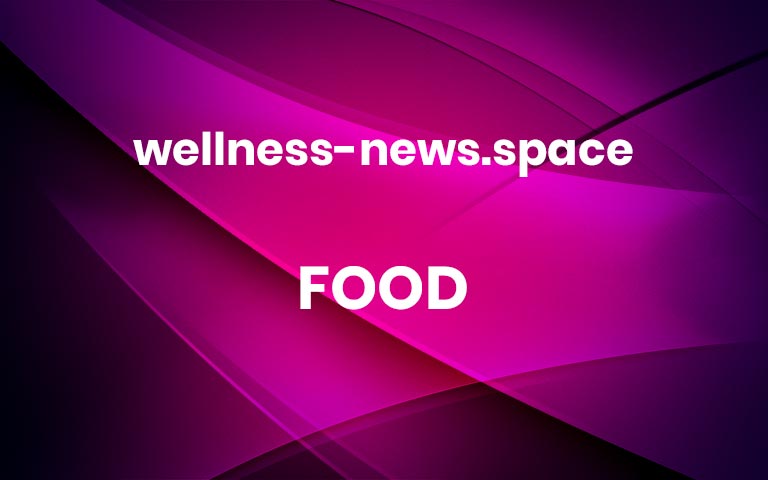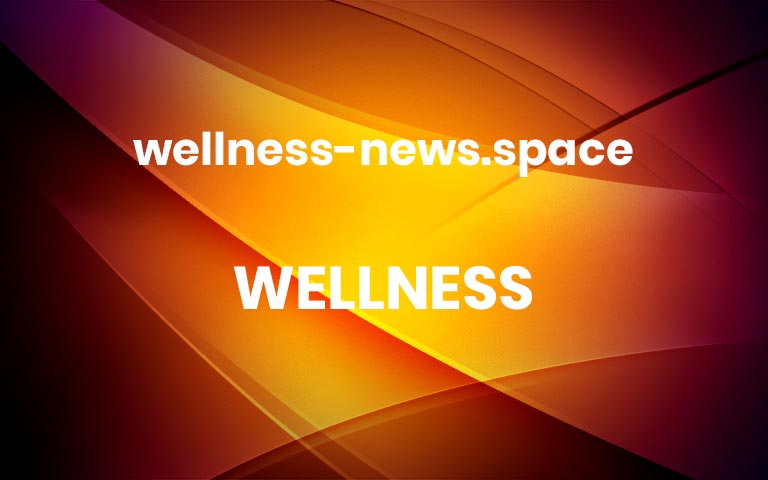If we had a dollar for every self-help book we meant to pick up recently, but got distracted by, uh, the world exploding, we’d have enough Amazon credits to buy Eckhart Tolle’s entire library. Instead, we recommend you actually pick up one (or all 20) of the below. Then, make it your mission to read it cover-to-cover. With the best self-help books around, a happier, healthier you is only a few easy chair sessions away.
Courtesy image
1. The Immunotype Breakthrough: Your Personalized Plan to Balance Your Immune System, Optimize Health, and Build Lifelong Resilience by Heather Moday, MD
Heard much about bolstering your immune system recently? Out on December 21, 2021, this timely book looks at cutting-edge research and case studies to give you no-nonsense insights on optimizing your health with an individualized plan. The plans are based on your immunotype, which Moday identifies as Smoldering, Weak, Hyperactive, and Misguided. Follow the program and sign up for that half-marathon already.
[$28; amazon.com]
Get it
Courtesy image2. Inner Harmony: Living in Balance by Jon Kolkin
Sometimes, you just wanna look at photos. Okay, and a bit of inspiring text, too. Here, award-winning photographer and physician Dr. Jon Kolkin chronicles more than a decade of visiting Buddhist communities across Asia, with a first-hand glimpse inside monastery life. The arresting visuals and accompanying words will remind you to slow down, zen out, and remember that your problems probably aren’t as big as you’re making them out to be.
[$48; amazon.com]
Get it
Courtesy image3. When Crisis Strikes: 5 Steps to Heal Your Brain, Body, and Life from Chronic Stress by Jennifer Love, MD and Kjell Tove Hovik, PhD
Do you always feel on edge or like the next code red is around the corner? Do yourself a favor and pick up this book—pronto. Co-written by a psychiatrist and a neuropsychologist, you’ll get schooled on what’s happening on a biological level in your body and mind. You’ll also learn how to navigate life’s difficult times and become a more resilient fella, all in some 247 pages. Chronic stress is awful—time to take a proactive step to leave it behind.
[$8; amazon.com]
Get it
Courtesy Dr. Marvin Singh4. Rescue Your Health: How New Advances in Science Can Help You Feel Better, Boost Performance, and Live Longer by Marvin Singh, MD
Brimming with cutting-edge scientific research and intel on reducing your risk for heart and liver disease, cancer, and degenerative brain disorders. You’ll be taking lots of notes on this one. As Singh capably narrates how to live longer (and better) in easy-to-follow language, you’ll only wish you had gotten your hands on this sooner.
[$9; amazon.com]
Get it
Courtesy image5. Shift into a Higher Gear: Better Your Best and Live Life to the Fullest by Delatorro McNeal
McNeal, a motorcycle aficionado and honorary PhD, uses biking metaphors to reveal his tried-and-true techniques for improving your life. The book has exercises, journaling activities, and compelling questions to get your wheels turning, too. With any luck—and hard work—you’ll soon be changing your daily habits and feeling happier and more fulfilled than ever.
[$10; amazon.com]
Get it
Courtesy image6. The Body Keeps the Score: Brain, Mind, and Body in the Healing of Trauma by Bessel van der Kolk, MD
It’s no surprise this 2014 bible on healing from trauma re-graced the New York Times bestseller list during the pandemic. The book guides you through research on psychological trauma and helps you set yourself up for better days ahead. For science enthusiasts, it also provides a fascinating look at how trauma changes the body and mind—and not how you think.
[$10.49; amazon.com]
Get it
Courtesy image7. Ageless Intensity: High-Intensity Workouts to Slow the Aging Process by Pete McCall
Want to be skiing and surfing at 100? Us too. In this book, McCall, a certified strength and conditioning specialist, gives the reader research-backed insights on HIIT training and how you can use the principles to get in incredible shape, regardless of your age. Whether you’re looking for a fitness tune-up or hoping for a body transformation, everyone will come away from this book with actionable advice on keeping their joints healthy, muscles strong, and mindset positive.
[$14; amazon.com]
Get it
Courtesy image8. This is Your Brain on Food: An Indispensable Guide to the Surprising Foods that Fight Depression, Anxiety, PTSD, OCD, ADHD, and More by Uma Naidoo, MD
Allow us to state the obvious: You are what you eat. Your brain thinks so, too. In fact, recent studies have revealed that your diet can have a major impact on your noggin, whether in the realm of dementia, sleep disorders, or mental health conditions. In this book, a board-certified psychiatrist, nutrition specialist, and professionally trained chef, helps you understand the science in laymen’s terms and provides you with 40 recipes designed to support brain health. Bon appétit.
[$13; amazon.com]
Get it
Courtesy image
9. Peace from Anxiety: Get Grounded, Build Resilience, and Stay Connected Amidst the Chaos by Hala Khouri
Yoga teachers, how do they do it? Therapist and yoga teacher Hala Khouri is about to show us. Get ready to overhaul your life with practical tools for managing stress and recovering from hardships and trauma. It may not be the same as your cozy little neighborhood yoga studio (thanks, pandemic), but it will certainly give you a helping hand in leading a less anxious life.
[$10.97; amazon.com]
Get it
Courtesy image10. Mindfulness For People Who Suck At Being Mindful: 6 Practical Shifts For Making Mindful Choices, Reclaiming Your Power and Creating A More Fulfilling Life by Melissa Maxx
This helpful guide covers many aspects of mindful living with a no-frills approach you’re sure to appreciate. Enhance your personal growth, work on carving out more time for yourself, and learn how to cultivate your mind-body connection for a calmer, saner life. If you’re feeling particularly frazzled as of late, join us in walking this path to less insanity, more bliss.
[$4; amazon.com]
Get it
Courtesy image11. Upward Spiral: Using Neuroscience to Reverse the Course of Depression, One Small Change at a Time by Alex Korb
This helpful book gives you concrete takeaways on improving your everyday life, whether you’re depressed, anxious, or just in need of a little spiritual SOS. Yes, some tips are refreshers on the obvious: See a therapist, exercise, get a good night’s sleep, but Korb also includes lesser-known techniques that’l have a measurable impact on your wellbeing. (For example, when you’re feeling panicked, set up any kind of plan to activate a region in your brain to make you feel more in control.) FYI: The first part of the book explores the physiological underpinnings of depression, particularly helpful if you’re trying to understand what’s going on in your mind or that of a loved one.
[$11; amazon.com]
Get it
Courtesy of the Tosin King James Archive12. Soul-Fullness, A 21-Day Do-It-Yourself Program for Spiritual Healing, Prophecy, Dream Study, Inner Guidance, and Total Mastery by Tosin King James
A fitting release for January 1st, this 2022 book will whip you into shape in less than a month, whether you’re dreaming of moving across the country or finding peace with a challenging relationship in your life. We can’t promise the guardian angel depicted on the cover will manifest in your life. But we do think you’ll put down the book feeling like a better version of yourself.
[$10; amazon.com]
Get it
Courtesy image
13. Advanced Chakra Healing: Four Pathways to Energetic Wellness and Transformation by Cyndi Dale
Okay, so it’s a little out there, but stranger things have happened in the past year than, you know, positing that spinning wheels of energy exist at various points along your body, from your crown chakra to your root chakra. Wherever you fall on the supernatural spectrum, you’re in good hands with Dale. She’s the author of 28 books on energy healing and spirituality. You’re bound to close the book with a new insight or 50 from the hands-on exercises and her teachings. From learning about tapping into your intuition better to energy mapping, this 800-page book is packed with advice to free yourself from energy blocks.
[$45; amazon.com]
Get it
Courtesy image14. Permission to Glow: A Spiritual Guide to Epic Leadership by Kristoffer Carter
Hoping to get more in touch with your spiritual side, all the while building a business empire? Check out this self-help book for making the most of your career. With plenty of humor and pop culture references thrown into the mix, this is a spiritual guide unlike any we’ve ever read. P.S. Check out this “Good Life Project” podcast if you want to get a sense of what’s in store before buying.
[$10; amazon.com]
Get it
Courtesy image15. Mindfully Wise Leadership: The Secret of Today’s Leaders by Keren Tsuk, PhD
If you’re looking to enhance your workplace happiness and success, consider this book your personal coach. It has lessons on being a better boss, learning how to engage your employees more meaningfully, and building your empire. Expect plenty of real-world examples, practical tools, and theories to use, all presented in an easy-to-digest format.
[$28; amazon.com]
Get it
Courtesy image16. Aspire!: How to Create Your Own Reality and Alter Your DNA by Frank McKinney
Need a total life reset? We feel you. Whether you’re recovering from a rough breakup or looking to overhaul your diet, this book shows you how to reinvent all aspects of your life, expand your mindset, and all-around be your healthiest self, mentally and physically. It’s half Tony Robbins, half Louise Hay.
[$20; amazon.com]
Get it
Courtesy image17. Full Catastrophe Living: Using the Wisdom of Your Body and Mind to Face Stress, Pain, and Illness by Jon Kabat-Zinn, PhD
Originally published in 1990, this fan-favorite is just as relevant now. Here, the father of MBSR (mindfulness-based stress reduction) will help you unlock your full potential, ease your anxiety, help you get a grip on chronic pain, and enhance the overall quality of a day in your head. If you’ve already read this book and loved it, check out Kabat-Zinn’s MasterClass on mindfulness and meditation.
[$16.89; amazon.com]
Get it
Courtesy image18. The Dry Challenge: How to Lose the Booze for Dry January, Sober October, and Any Other Alcohol-Free Month by Hilary Sheinbaum
Pandemic times makes you realize it’s time to cut back or lay off the bottle completely? Consider this book your step-by-step outline for making it through your first Dry January, Sober October, or any other alcohol-free month. The book includes actionable advice for making the shift, DIY mocktail recipes, what to do if you fall off course, and more. We hear it pairs well with any of these nonalcoholic spirits that taste like the real thing.
[$11; amazon.com]
Get it
Courtesy image19. GAIN Without Pain: The Happiness Handbook for Health Care Professionals by Greg Hammer, MD
A Stanford University Medical Center professor and physician is here to tell you: Life can be better. Much, much better. Written pre-pandemic to address the rising rates of burnout in healthcare professionals, the insights are applicable for anyone struggling to stay afloat during these unprecedented times. P.S. “GAIN” is an acronym here for Gratitude, Acceptance, Intention, and Non-judgment.
[$15; amazon.com]
Courtesy image20. This Monk Wears Heels: Be Who You Are by Kodo Nishimura
Recently named to TIME magazine’s Next Generation Leaders’ list, Nishimura’s hotly anticipated book is out on February 8, 2022. Within, the make-up artist and Buddhist monk shares wisdom and learnings on self-esteem, embracing your true self, and getting by in this crazy world.
[$22; amazon.com]
Get it
For access to exclusive gear videos, celebrity interviews, and more, subscribe on YouTube! More



